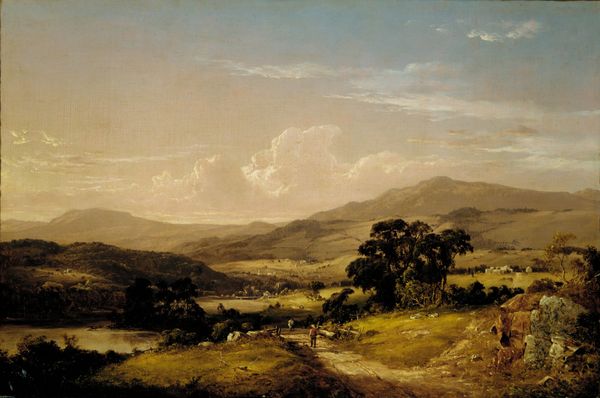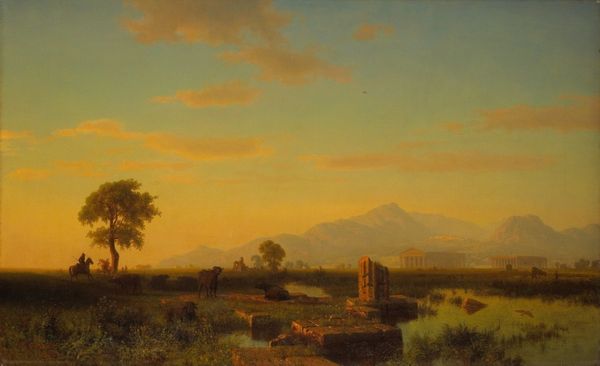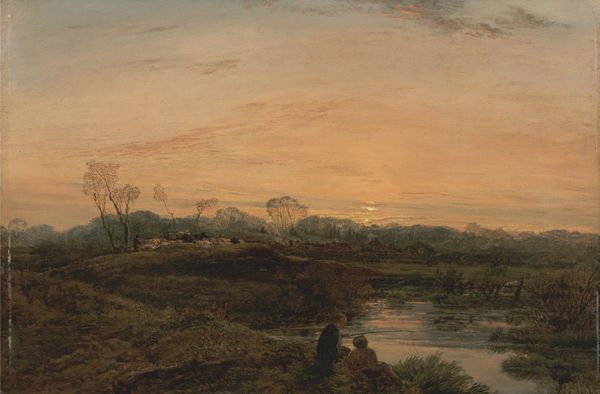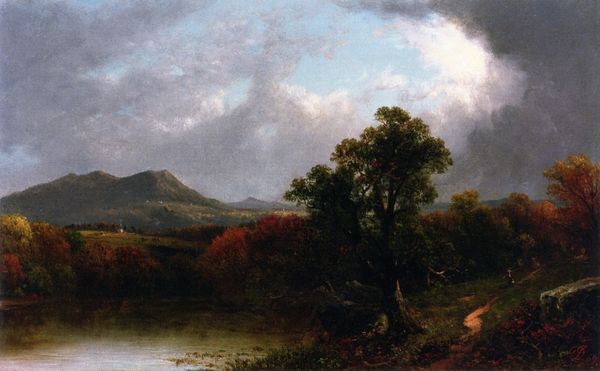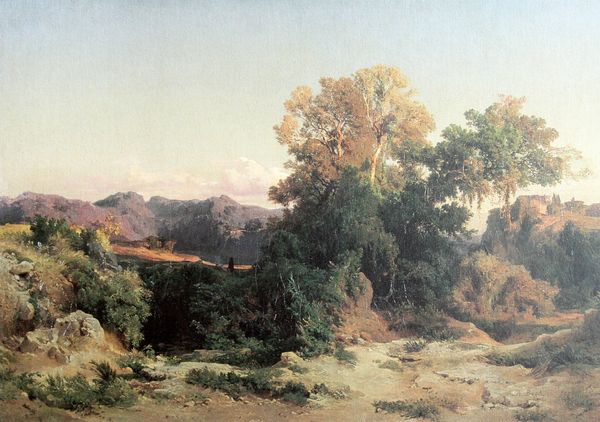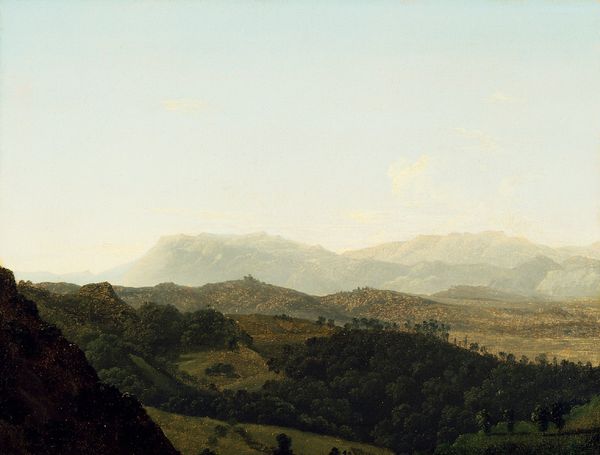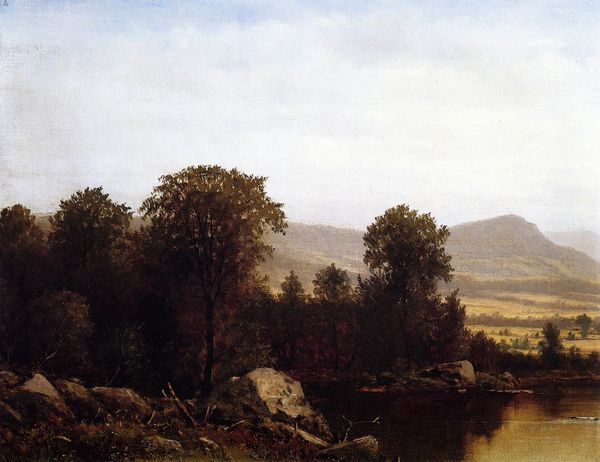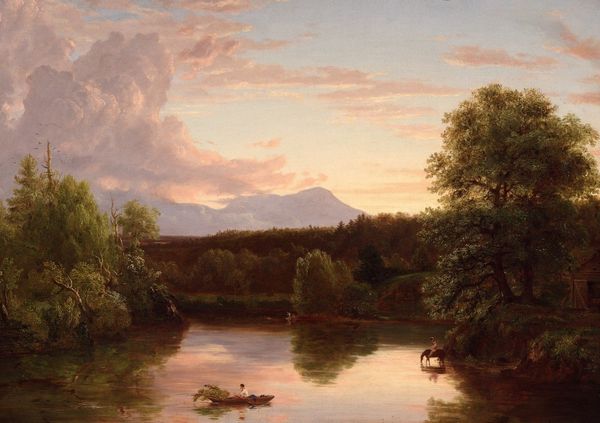
Copyright: Public domain
Curator: William Hart painted this landscape, entitled "The Last Gleam," around 1865. Look closely; you'll see cows in the lower field, with trees dotting the middle ground and a beautiful sunset in the background. Editor: Wow, that title hits me. "The Last Gleam"—it does have this wistful feeling of a moment passing. The light on the mountains...it’s beautiful but there is definitely something nostalgic in the scene overall. Curator: Indeed. Hart was part of the Hudson River School, which celebrated the American landscape during a period of industrial expansion and romantic ideals about nature. Editor: I imagine life wasn’t easy back then. There is something grounded in the image, thanks to the presence of these pastoral scenes – cows going about their lives and simple things suggesting a kind of human connection. How do you think that affects our modern consumption of it? Curator: Well, for one, Hart and the Hudson River School generally sought to create scenes that were grander than the existing reality. This isn’t to suggest the landscape wasn't magnificent, only that these were commercial images appealing to nationalistic sentiments. I think a modern audience, well aware of the rapid changes to climate and geography brought on by industrial modes, reads Hart's nature paintings with an awareness of loss. Editor: Absolutely, a visual elegy. Look at how deliberately those beams of light stretch across the field – so dramatic. Were these paintings intended to serve as reminders to protect the land, perhaps? Curator: To some degree, maybe. Certainly they served as reminders of what was there. But also, consider the commodification of the image. The landscapes became associated with progress. To your point, the image of nature becomes entwined with the human presence...perhaps not necessarily to the ultimate benefit of nature itself. Editor: It is a tension. It definitely has me pondering the landscapes of my own memories, how intertwined they are with emotion and experience. Curator: A good observation, the painting can lead us to thinking about our own lives in relation to place and production.
Comments
No comments
Be the first to comment and join the conversation on the ultimate creative platform.

